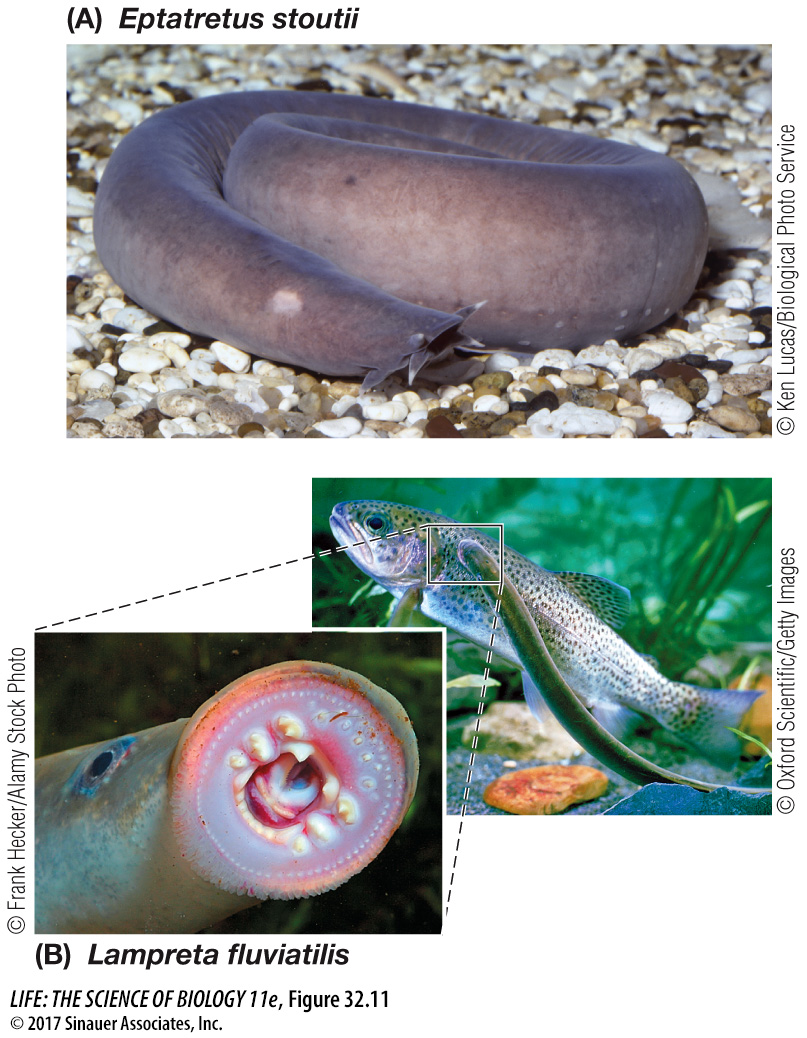The phylogenetic relationships of jawless fishes are uncertain

The hagfishes are thought by many to be the sister group to the remaining vertebrates (see Figure 32.10). Hagfishes (Figure 32.11A) have a weak circulatory system with three small accessory hearts (rather than a single, large heart); a partial cranium, or skull (containing a brain with no cerebrum or cerebellum, two main regions that characterize the brains of other vertebrates); and no jaws or stomach. They also lack separate, jointed vertebrae and have a skeleton composed of a firm but pliable material called cartilage. Thus some biologists do not consider hagfishes to be vertebrates and instead use the term “craniates” to refer collectively to the hagfishes and the vertebrates. Some analyses of gene sequences suggest, however, that hagfishes may be the sister group of the lampreys (Figure 32.11B); in this phylogenetic arrangement, the hagfishes and the lampreys are collectively called the cyclostomes (“circle mouths”). If in fact the hagfishes and lampreys do form a monophyletic group, then hagfishes must have secondarily lost many of the major vertebrate morphological features during their evolution.

The 80 known species of hagfishes are unusual marine animals that produce copious quantities of mucus as a defense. They are virtually blind and rely largely on the four pairs of sensory tentacles around the mouth to detect food. Although they have no jaws, hagfishes have a tonguelike structure equipped with toothlike rasps that they use to tear apart dead organisms and to capture their principal prey, polychaete worms. Hagfishes have direct development (no larvae), and individuals may actually change sex from year to year (from male to female and vice versa).
Media Clip 32.2 Hagfish Slime
Although the lampreys and hagfishes may look superficially similar (with elongate eel-
The nearly 50 species of lampreys either live permanently in fresh water or are anadromous—